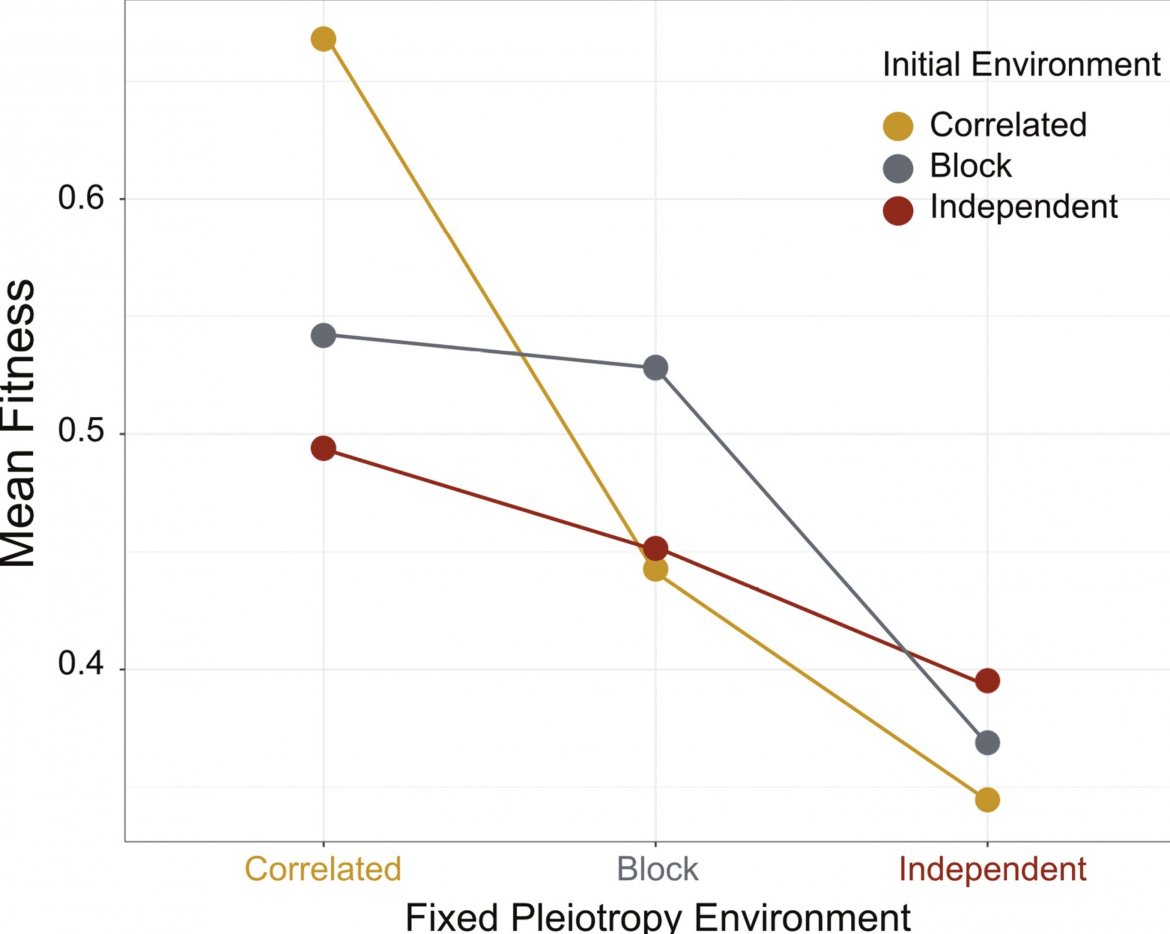
Figure 3. Fitness comparisons between populations evolved in response to the three patterns of environmental change. The results displayed here refer to the experiment in which we fixed the pleiotropy of each population in a set of replicate populations and subsequently exposed them to the three different environmental patterns. The horizontal axis shows the three different conditions that populations with fixed pleiotropy were exposed to after their initial evolution. The different colors of the circles indicate which initial environment the population was exposed to before pleiotropy was fixed. Mustard yellow represents populations initially exposed to correlated environments, blue represents block-correlated environments, and crimson represents independent environments. Populations with pleiotropy evolved in each environment evolve fitness faster in environments with changes in the selective optima that matches their original environment. Means are shown with 95% confidence intervals, but these are so narrow as to be invisible with the size of the points. The confidence interval was calculated using the average over time of all 500 replicates.
Abstract
The genetic covariance between traits can affect the evolution of a population through selection, drift, and migration. Conversely, research has demonstrated the reciprocal effect of evolutionary processes on changing genetic covariances, in part through mutational covariance, correlational selection, and plasticity. In this article, we propose that correlated changes in selective optima over generations can cause the evolution of genetic covariance and the G-matrix in such a way that the population can, in the future, evolve faster. We use individual-based simulations of populations exposed to three types of changing environments that differ in the correlation of the change between selective pressures. Our simulation experiments demonstrate that selection pressures for different traits changing in a correlated pattern over generations can lead to stronger trait correlations compared to the case with independently changing selective optima. Our findings show that correlated selective pressures result in significantly higher genetic trait covariance and that pleiotropy accounts for the majority of the difference in covariance between treatments. We also observe that the mutational variance evolves according to the environment that the populations were exposed to. Moreover, we show that clustered patterns of changes in selection can allow the evolution of genetic modularity. We show that the pattern of change in the selective environment affects the pace at which fitness evolves, with populations experiencing correlated change in optima having on average higher mean fitness than those experiencing uncorrelated environment change.